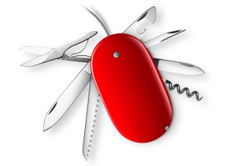To really be best in class with your demand generation program, lead stage management is key. It’s imperative that you keep a tight control on your leads in their active lead stage. By doing so, you’ll have better reporting, forecasting and targeted campaign management at your fingertips.

First, you need to outline your lead stages from start to finish. Here’s an example of a custom lead stage outline I had previously created (that’s slightly different from your traditional (Prospect -> MQL -> SAL -> SQL -> Close) lead stage management flow.
Lead Stage – Simple Description
| Prospect – all names in our database |
| Lead – identifiable & shows interest in our material/product |
| Qualified Lead – Sales has conversation with, requested demo, shopping for solution |
| Imminent Opportunity – received demo or trial is set-up |
| Opportunity – completed needs assessment or requirements template |
| Proposal – contract prepared and in hand |
| Closed Won – became a client |
From these lead stages, I created a simple Cost Per Sale Calculator with each of the stage conversion rates estimated (or defined if you know those details).

From there, you want to create the lead stages you’ve decided upon in your marketing automation platform, also creating the subsequent business and/or automation rules that move them to their respective lead stages. You do this most effectively with advanced nurturing campaigns, triggering lead stage changes based on specific activities, lead profile information, change in opportunity details, your sales qualification process and more.
By taking the time to define your lead stage process, you will have a better understanding of your marketing and sales funnel and be able to produce better lead stage management reports like this:

An active and accurate view of your lead stage funnel analysis (part of the Net-Results platform) brings you one step closer to having a world class demand generation engine up and running.
Good luck – let us know if you have any questions.

